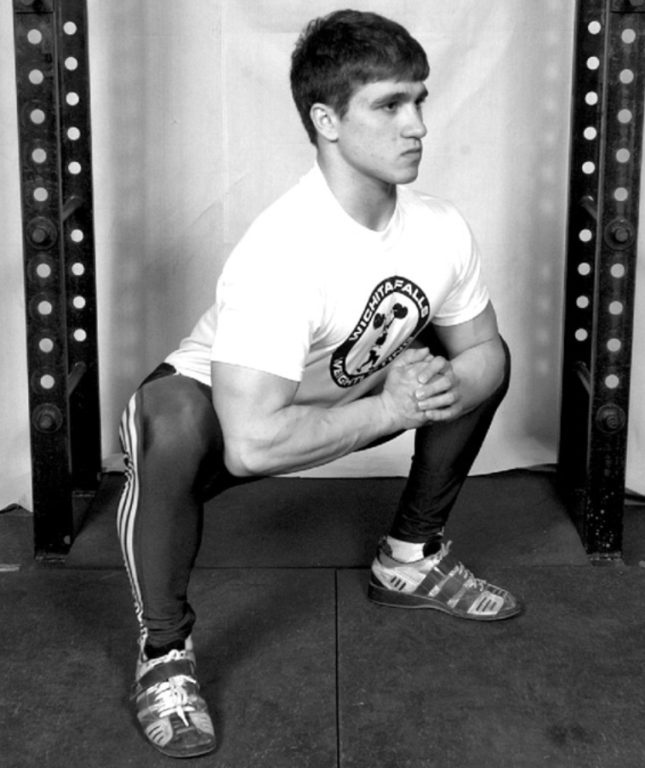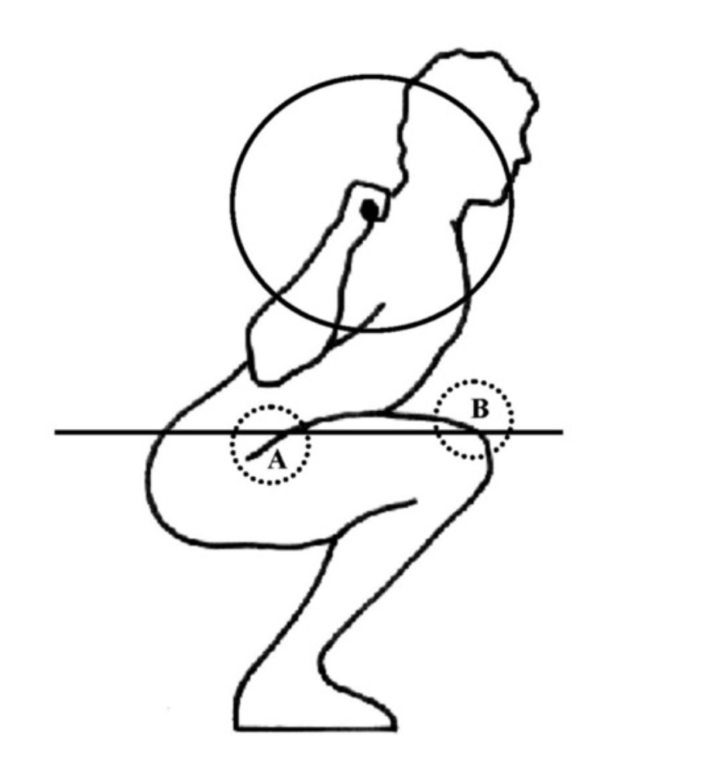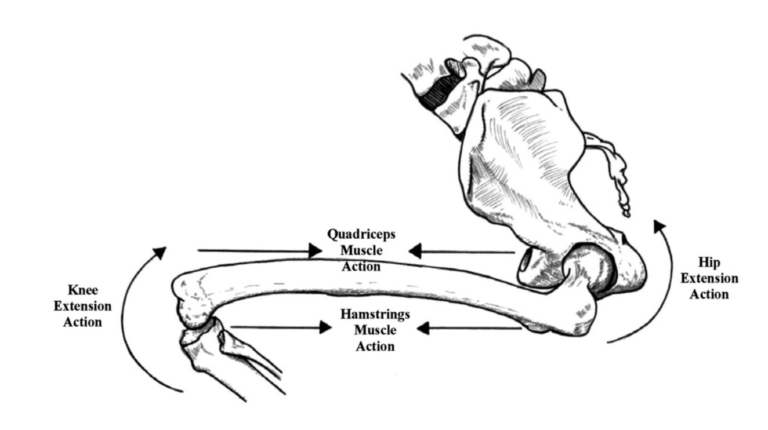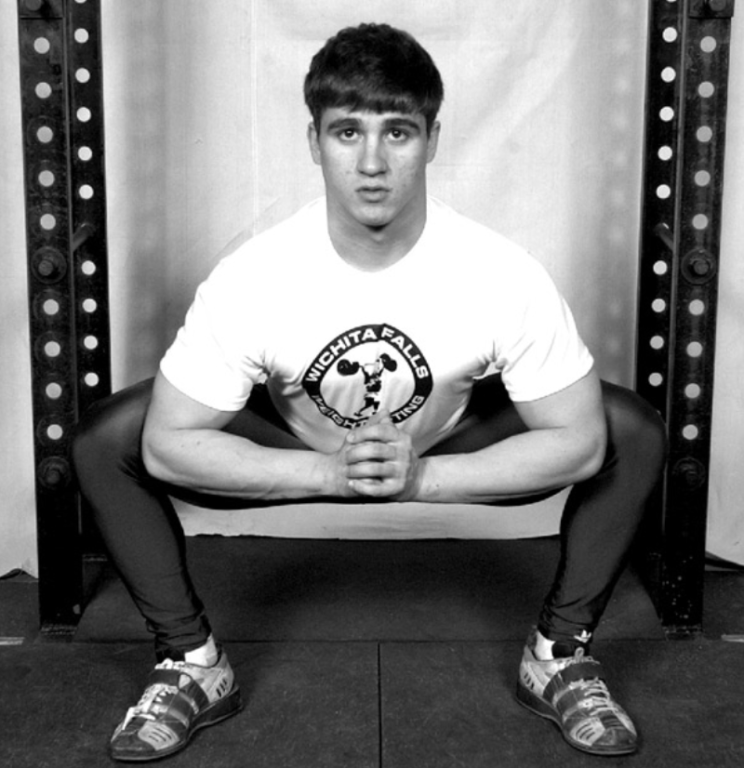 Anyone who says that full squats are “bad for the knees” has, with that statement, demonstrated conclusively that they are not entitled to an opinion about the matter. People
Anyone who says that full squats are “bad for the knees” has, with that statement, demonstrated conclusively that they are not entitled to an opinion about the matter. People
who know nothing about a topic, especially a very technical one that requires specific training, knowledge, and experience, are not due an opinion about that topic and are better served by being quiet when it is asked about or discussed. For example, when brain surgery, or string theory, or the NFL draft, or women’s dress sizes, or white wine is being discussed, I remain quiet, odd though that may seem. But seldom is this the case when orthopedic surgeons, athletic trainers, physical therapists, or nurses are asked about full squats. Most such people have absolutely no idea what a full squat even is, and they certainly have no concept of how it affects the knees, unless they have had additional training beyond their specialties, which for the professions mentioned does not include full squats. Because if these people knew anything about squatting, and the difference between a full squat and any other kind of squat and what they do to the knees, they would know that “full squats are bad for the knees” is wrong and thus would not be making such a ridiculous statement.
The squat referred to here is the full, below- parallel squat, the style that is—at least theoretically— performed at a powerlifting meet, where the top of the patella and the iliac fold (the crease in the shorts that defines the position of the hip joint) form a plane below which the hips must drop. In a correct full squat, the femurs will be in line with the feet, the heels will be about shoulder- width apart and the toes pointed about 30 degrees out from straight ahead, so there is no twisting on the knee. The knee will be just a little in front of the toes, no more than an inch or two, and the weight will be distributed evenly on the feet, with heels most definitely down. With the back tight and flat, the torso will lean forward enough that when the bar is on the shoulders, a line dropped plumb from the end of the bar to the ground would go through the middle of the foot; this usually puts the back at about a 45-degree angle with the floor.
Now, this is not to say that doctors, PTs, and nurses haven’t been exposed to knee anatomy. They have, but they have not, as a rule, been exposed to correct squatting, and thus they have no idea how the movement is related to knee anatomy. The fact is that the knee and hip anatomy actually dictate correct squatting technique. Smart as these people are, you’d think that they could figure this out, and thus derive correct technique, the way we ignorant, uneducated lifters have. But I guess you’d be wrong if you thought that.
 What generally happens is that when one of these professionals explains why you will die if you do squats, he will demonstrate with squat technique so incorrect that even unweighted it hurts to watch, and then he’ll say See There, Squats Are Bad For Your Knees. This is like saying that if you burn the beans, they stink up the house, so you shouldn’t eat beans. You don’t get to define the argument in terms that prove you right, and then charge money because you won the argument. You just don’t, as Bill O’Reilly always says.
What generally happens is that when one of these professionals explains why you will die if you do squats, he will demonstrate with squat technique so incorrect that even unweighted it hurts to watch, and then he’ll say See There, Squats Are Bad For Your Knees. This is like saying that if you burn the beans, they stink up the house, so you shouldn’t eat beans. You don’t get to define the argument in terms that prove you right, and then charge money because you won the argument. You just don’t, as Bill O’Reilly always says.
The problem is that, as is so often the case, one profession does not recognize that the other has something to offer. Or more correctly, as in this case, that the other is even a profession, with a body of professional knowledge and experience that is particular to it. Chiropractors, optometrists, and pharmacists often dislike doctors for this reason. Granted, a chiropractor who claims to be able to treat cancer might be causing his own problems, but it would be better if doctors recognized that chiropractors have a legitimate, useful place in the health care professions. And that strength and conditioning professionals, with decades of experience in getting people strong, might know more about squatting than people whose training has been in the treatment of injuries and disease.
Maybe it would be useful if I didn’t alienate all the orthopods and PTs in the world with a blanket indictment of their perspicacity. But hey, tit for tat—they have indicted the single best, most valuable exercise in the weight room, the one more athletes have used to get strong and advance their careers than any other, and I can be petty at times. Anyway, what are they going to do about it? Make me squat?
I had a conversation with an athletic trainer at a recent coach’s convention. He explained that he didn’t like his coaches teaching the squat because they were bad for the you-know-whats. I showed him how I coach the squat—femurs and feet parallel, hips back and deep, heels down, as described above. He said, “Well, if you do them like that they’re okay. But these guys can’t teach this to the kids.” I asked why not, and he said “It’s too hard to teach!” I said, “I just showed you. Did that seem hard?” His first problem was that he didn’t know what constituted a correct squat. His second problem was that he didn’t know how to teach the coaches how to do it, much less how to teach them how to teach it. When he realized that he had just learned how to teach them, his problem became the fact that he had clearly painted himself into a corner with his previous position. The kids are the ones who lose in such a situation.
The fundamental misunderstanding here is about what we’re trying to accomplish when we squat. The quadriceps are not the only muscles that are supposed to be involved in the exercise. The hamstring muscles on the back of the thigh attach at the front of the tibia, at the bottom of the knee, wrap around the knee on both sides and pull back on it from below as they get tight. The adductors connect the groin area of the pelvis to the medial (inside) aspect of the femur, and these muscles also pull back on the knee when they tighten, but from above the knee and toward the inside. Both of these muscle groups tighten from behind the knee as the torso leans forward, the knees travel out to stay parallel to the feet, and the hips reach back for correct depth, thus balancing the forward-pulling stress from the quadriceps and the patellar tendon around the front of the knee. But they only exert this balancing pull when they are stretched, in the full squat position. At the bottom of the squat, where the hamstrings and adductors are fully stretched, there is as much pull on the knee from the posterior as from the anterior. In this position, the quadriceps’ knee extension force is balanced by the hamstrings’ knee flexion force. At the same time, the adductors (in the inner thigh) have stretched too, and if the knees stay parallel to the feet, as they should, the adductors will get tight and pull on the femurs. This knee-out position anchors the femur so that adductor contraction and hamstring contraction produce hip extension—a little hard to visualize, but apparent enough when sore adductors show up the day after a heavy squat workout.
 Because the hamstrings (two of them anyway) attach to the pelvis at the ischial tuberosity, any forward tilting of the top of the pelvis will stretch the hamstrings away from their insertion points at the knee. When the pelvis and the back are properly locked in a flat rigid unit by the back muscles, the forward angle of the torso and pelvis tightens up the hamstrings. At the same time, if the knees are shoved out to the sides at the bottom of the squat, not forward over—or, god forbid, inside— the toes, the adductors are tightened as well. (Sorry this is so complicated.) If this is done correctly, there is a slight “bounce” or muscular “rebound” at the bottom of the squat, which initiates the upward drive out of the hole. This hip extension (the standing up out of the squat) is accomplished much more efficiently and much, much more safely for the knee when it occurs from this correct position—a position that cannot be achieved unless the squat is deep.
Because the hamstrings (two of them anyway) attach to the pelvis at the ischial tuberosity, any forward tilting of the top of the pelvis will stretch the hamstrings away from their insertion points at the knee. When the pelvis and the back are properly locked in a flat rigid unit by the back muscles, the forward angle of the torso and pelvis tightens up the hamstrings. At the same time, if the knees are shoved out to the sides at the bottom of the squat, not forward over—or, god forbid, inside— the toes, the adductors are tightened as well. (Sorry this is so complicated.) If this is done correctly, there is a slight “bounce” or muscular “rebound” at the bottom of the squat, which initiates the upward drive out of the hole. This hip extension (the standing up out of the squat) is accomplished much more efficiently and much, much more safely for the knee when it occurs from this correct position—a position that cannot be achieved unless the squat is deep.
The below-parallel position accomplishes more than just knee safety and lifting efficiency. It allows the squat to be quantified. If every rep is below parallel, then every rep represents the same distance traveled with the load. If the load increases, and the distance the load moves is the same, then moving it requires more work. But if the load increases while the squat depth decreases, the work performed is not necessarily greater, and may in fact be less. Without knowing how far the weight travels, it is impossible to say how much work is done and, consequently, whether any improvement has taken place since the last workout. If every squat is below parallel, then every squat is safe, efficient, and comparable with every other squat a person does. All the hip and leg muscles can be trained, joints can be protected, progress can be made and judged, programs can be evaluated, and contests can be held without fistfights breaking out.
The part that puzzles me is: what do they think happens during a half squat? Good things? The only muscles under any stress are the quads, since the hamstrings, glutes, and adductors are not involved due to the limited range of motion. The spine is invariably loaded too heavily, since it is incredibly easy to “squat” big weights if you have to move them only a few inches. The knees are disproportionately subjected to anterior stress, since the lack of depth does not engage the hamstrings and activate their posterior balancing effect. The lower back muscles, used in the full squat to maintain spinal alignment and the back and pelvis angle, get little work in the half squat because it is not deep enough to ever put the low back at much of an angle. So, if half squats are dangerous for the spine and the knees, and fail to train most of the muscles of the hips, legs, and lower back, why do they always tell you to do them? Because they just sound like a better idea? And where did they get the idea that squats were bad in the first place?
I can answer that last one. It was Dr. Karl Klein’s study at the University of Texas in 1961, a poorly designed and badly conducted mess that has never been replicated and has been successfully rebutted many times. Klein concluded that below-parallel squats produced “loose” knees, although no other training protocol was evaluated for comparison, no other tester administered the measurements, and all the data was biased by pre- test questioning of the subjects. To me, the interesting question is why the findings appealed to so many people, and why they made an impression that has persisted for fifty years.
 I think I can answer that one too. Half squats are easier than full squats. They are not as much work, in both the physical and moral sense. People are lazy. So, half squats are appealing. Even people who claim they are squatting deep are often not, since depth is sometimes hard to self-assess and since it is easier to squat high. This is deep psychology here, brain stem–deep. Full squats run contrary to human nature. But—and this is a very fundamental question—who is in charge? You, or your brain stem?
I think I can answer that one too. Half squats are easier than full squats. They are not as much work, in both the physical and moral sense. People are lazy. So, half squats are appealing. Even people who claim they are squatting deep are often not, since depth is sometimes hard to self-assess and since it is easier to squat high. This is deep psychology here, brain stem–deep. Full squats run contrary to human nature. But—and this is a very fundamental question—who is in charge? You, or your brain stem?
Are you willing to let medical professionals make excuses for your lack of willingness to do the hardest, most productive exercise in the weight room, an exercise that has been proven safe by decades of use by millions of very strong people? I don’t think you are. Please prove me right.